
Cardo Packtalk Pro vs Sena 60S: Which Premium Intercom Wins?
left for contents
So we want to get the best of the best when it comes to intercoms… Sena used to be the only game in town, but Cardo seems to be catching up: with sound by JBL, true IP67 waterproofing, and more reliable comms.
I’ve ridden enough miles (and led enough tours) to know that comms aren’t just “extras” that pump some music into your ears. They’re lifelines that keep your eyes on the road and your group out of the ditches.
The best of them don’t just let you talk; they manage the entire riding experience. I can be chatting with my group, getting GPS prompts in my ear, taking an urgent phone call, or enjoying listening to Katy Perry — I mean, Metallica! All while my focus stays where it belongs, on the ride.
And my preference? Cardo. I own 10+ Cardo devices, from the Spirit to the Packtalk Pro, for my tour company Ride of Passage.
However, the Sena 60S might be the RIGHT choice for YOU. Because we’re all different, unique, special and some of our friends have Sena’s from way back when!
And while Sena may have slacked off when Cardo was catching up, the Sena 60S is a seriously powerful unit with it’s own unique features, like the limitless-range WAVE intercom.
Over the years, I’ve tried plenty of systems, but two stand above the rest: Cardo’s Packtalk Pro and Sena’s 60S – both excellent, but in very different ways. And you can get 10% off either with my codes below (though sometimes Cardo doesn’t discount the Pro – it’s too popular!)
$499.95 | $370.00 |
|
|
|
|
- 15+ rider intercom over Mesh (even Senas)
- Magnetic air mount
- Auto on-off
- Crash detection and emergency call
- 45mm JBL speakers in the box (the best)
- Costs as much as a mid-range helmet
- Mesh and Wave intercom (unlimited range with cellular signal)
- Harman Kardon 40mm speakers
- Long battery life (17–22 hours)
- Mesh only connects with other Sena units
- Not fully waterproof
Cardo has built its reputation on mesh networking that just works. I can ride through tunnels, twisty canyons, even dense traffic, and my group stays connected. Add to that the JBL speakers, and the audio feels natural, not forced or tinny. It’s the kind of system that fades into the background, letting me focus on riding while it handles the rest.
Sena, on the other hand, feels like a feature-packed control center. The hardware itself is solid and confidence-inspiring, and it gives me a lot of control. It’s not just about talking to my group — it’s about options, from advanced audio control to integration with other devices. It feels like the system for riders who want to customize and tweak everything to match their style.
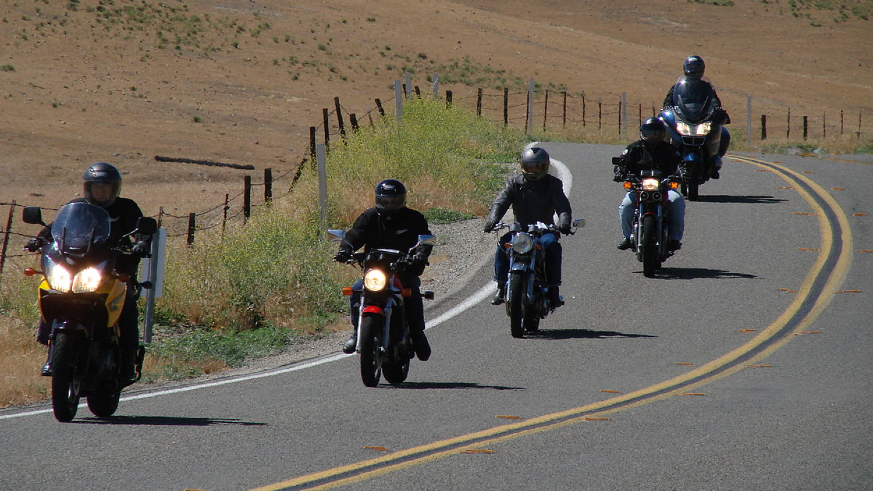
After hundreds of hours using both, here’s what I’ve realized: it’s not about which one works — because they both do, and they both do it well. The real question is which one fits the way you ride. For some, it’s the effortless, almost invisible communication of the Packtalk Pro. For others, it’s the tech-heavy, hands-on power of the Sena 60S.
For me? The answer shifts depending on the ride. And that’s what makes this comparison worth talking about.
Understanding Your Communication Requirements
Before examining technical specifications, it’s crucial to acknowledge the fundamental reality of group motorcycle communication: compatibility often outweighs individual preferences.
If your regular riding group has standardized on Cardo systems, introducing a Sena creates immediate compatibility challenges affecting everyone’s experience. Similarly, joining a Sena-equipped crew with a Cardo means accepting reduced functionality.

Both systems now support Universal Intercom for cross-brand communication, but this compatibility comes with significant limitations. You lose advanced mesh networking, sophisticated group management features, and seamless audio integration when mixing brands. The result is functional but basic communication that doesn’t leverage either system’s advanced capabilities.
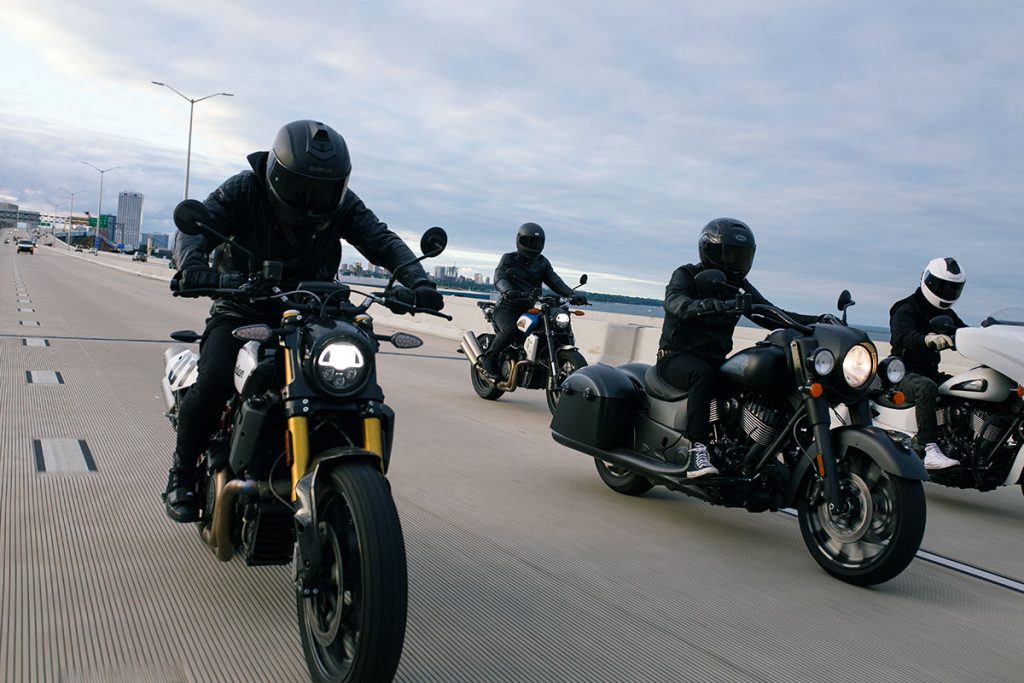
However, if you’re starting fresh, upgrading an entire group’s setup, or joining a new riding community, choosing based on merit rather than existing compatibility gives you the opportunity to select the optimal platform for your specific needs.
Group Size and Communication Scenarios
Your typical riding scenarios significantly influence which communication system will serve you best.
For small groups (2–6 riders), both Cardo and Sena systems perform well. In these situations, the choice largely comes down to interface preferences, comfort with the controls, voice command reliability, and other personal feature priorities. Either system will provide stable intercom communication, so it’s more about the experience than the technology gap.
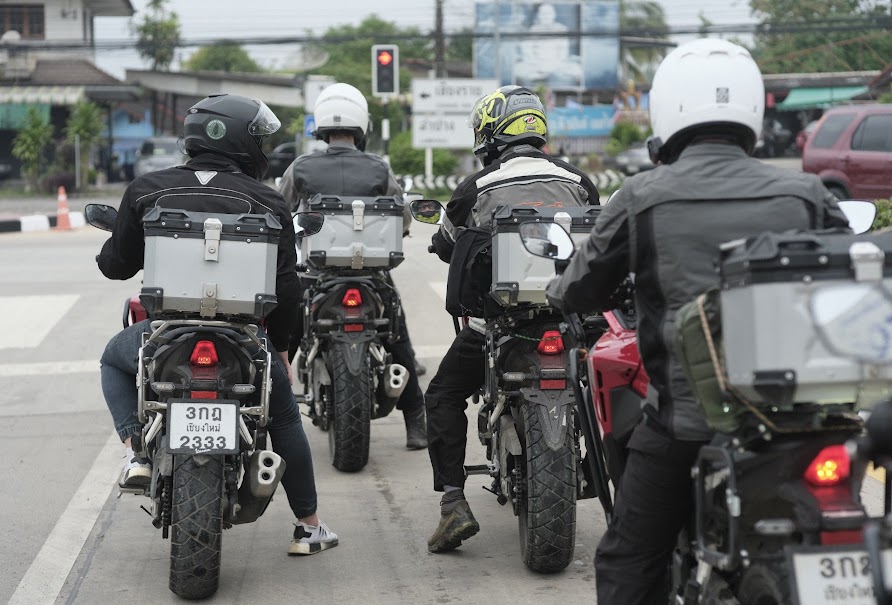
When riding in medium-sized groups (6–15 riders), Cardo begins to stand out with its dynamic mesh communication. It delivers superior clarity and self-healing connectivity — meaning if a rider drops off, the system automatically reconnects them without manual intervention. Sena’s Mesh 2.0 also performs capably, but Cardo’s mesh has a slight edge in seamlessness and group management.
For large group rides (15+ riders), Sena’s Open Mesh with Wave Intercom becomes a compelling option. It offers unlimited range via cellular fallback (when connected to a smartphone), making it ideal for widespread or loosely spaced groups. This approach supports massive riding events or tour-style formats where traditional Bluetooth or mesh limits would be a constraint.

Build Quality and Engineering Excellence
Both units represent premium construction, but their design philosophies reflect different priorities affecting daily use.
Cardo Packtalk Pro — Refined Premium Design
The Packtalk Pro feels premium out of the box with engineering focused on seamless integration into your riding routine. The unit balances substantial feel with refined ergonomics, and every interaction has been optimized to minimize cognitive load while maintaining riding focus.
The standout feature is the magnetic Air Mount which is ingenious and makes attaching and detaching the unit incredibly easy and secure. This isn’t just convenience — it represents a fundamental shift in how communication systems integrate with helmets. When managing multiple riders’ equipment or troubleshooting during tours, the magnetic mount allows instant attachment without fumbling with mechanical fasteners.
The Pro features automatic crash detection and auto on/off functionality that’s a game-changer for battery life and rider experience. These aren’t gimmicks — they’re practical features that enhance safety and eliminate common frustrations like dead batteries from forgotten power switches.
For a deeper dive into safety features, check out our review Cardo Packtalk Pro Review: Crash Detection.
Sena 60S — Advanced Engineering Evolution
The 60S is smaller and lighter than its predecessor, while offering better battery life, AI-enhanced algorithms, and a more robust Mesh 3.0 intercom. This represents meaningful engineering refinement, packing more capability into a leaner package.

Its construction emphasizes modularity and expandability, reflecting Sena’s philosophy that riders want personalization options. The 60S includes:
- 4 interchangeable faceplates for style customization
- 2 helmet clamp options for different mounting setups
- Multiple microphone configurations to adapt across helmet types and riding conditions
This flexibility ensures the 60S can be tailored to a wide range of riders and use cases.
Winner: Cardo Packtalk Pro (with a close second)
Cardo wins for its refined user experience, safety-first features (crash detection, auto on/off), and the Air Mount system, which sets a new benchmark for ease of use.
Sena comes close, especially for riders who value customization and modularity, but its upgrades feel more evolutionary compared to Cardo’s revolutionary mount and safety innovations.
In short: Cardo leads with integration and rider-centric design, while Sena excels in modularity and expandability.
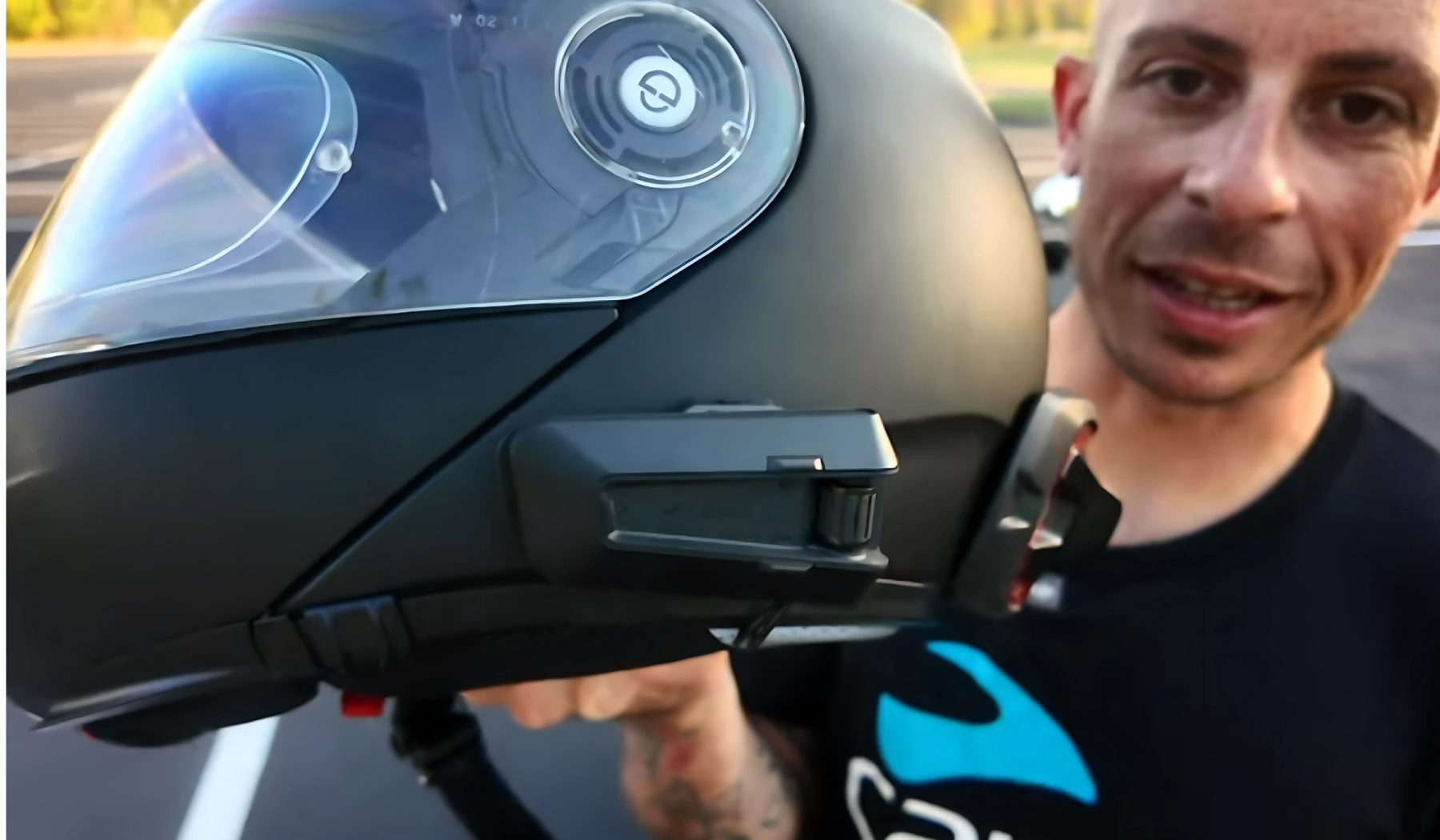
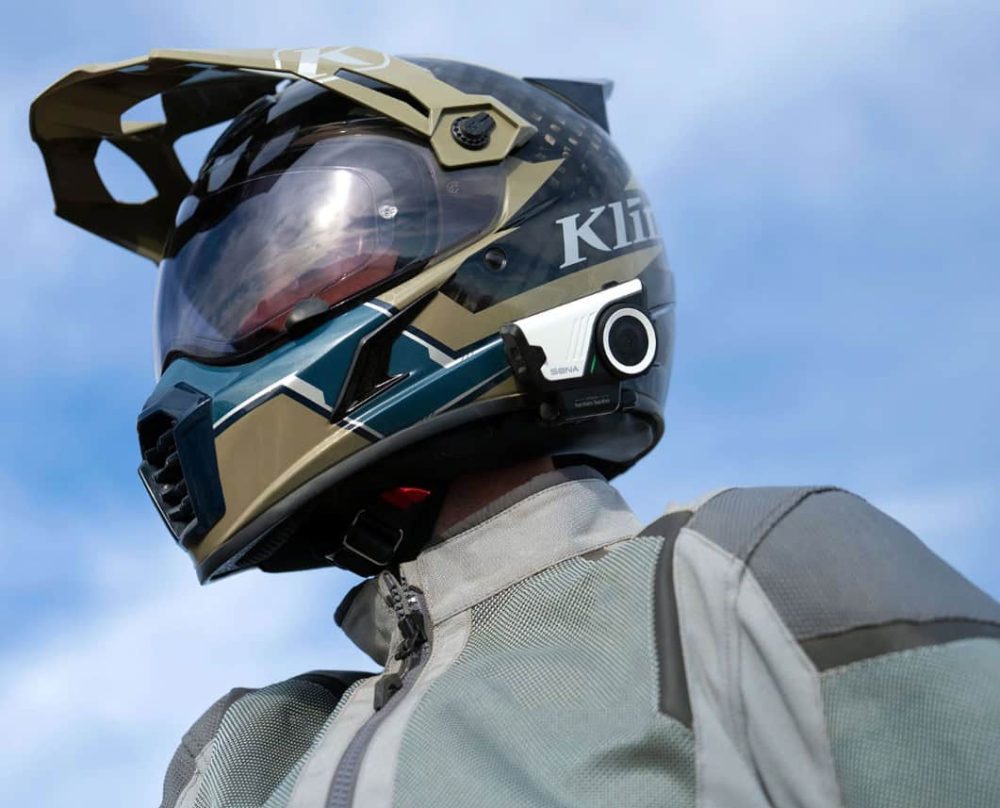
Audio Excellence — Premium Speaker Partnerships
Both systems feature partnerships with renowned audio companies, delivering exceptional sound quality through different approaches.
Cardo Packtalk Pro — JBL 45mm Premium Audio
The Packtalk Pro adds larger speakers with upgraded 45mm JBL speakers providing enhanced dynamic range and bass response. The larger drivers deliver better overall sound quality, particularly noticeable during music playback and in noisy environments.
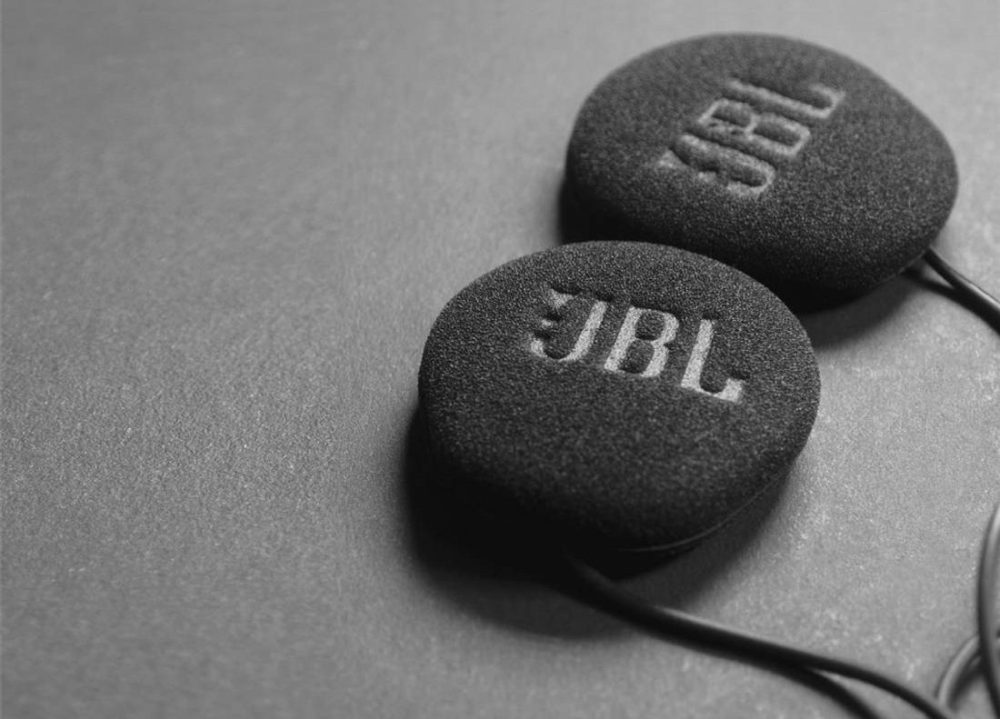
The three EQ sound profiles allow optimization for different scenarios: balanced for mixed use, voice-optimized for communication clarity, and music-focused for entertainment. This customization proves valuable across varying riding conditions and personal preferences.
Sena 60S — Harman Kardon 2nd Generation Audio
The 60S features 2nd Generation SOUND by Harman Kardon representing superior audio quality. This collaboration brings professional audio expertise to motorcycle-specific acoustic challenges, emphasizing clarity and accuracy across all audio sources.
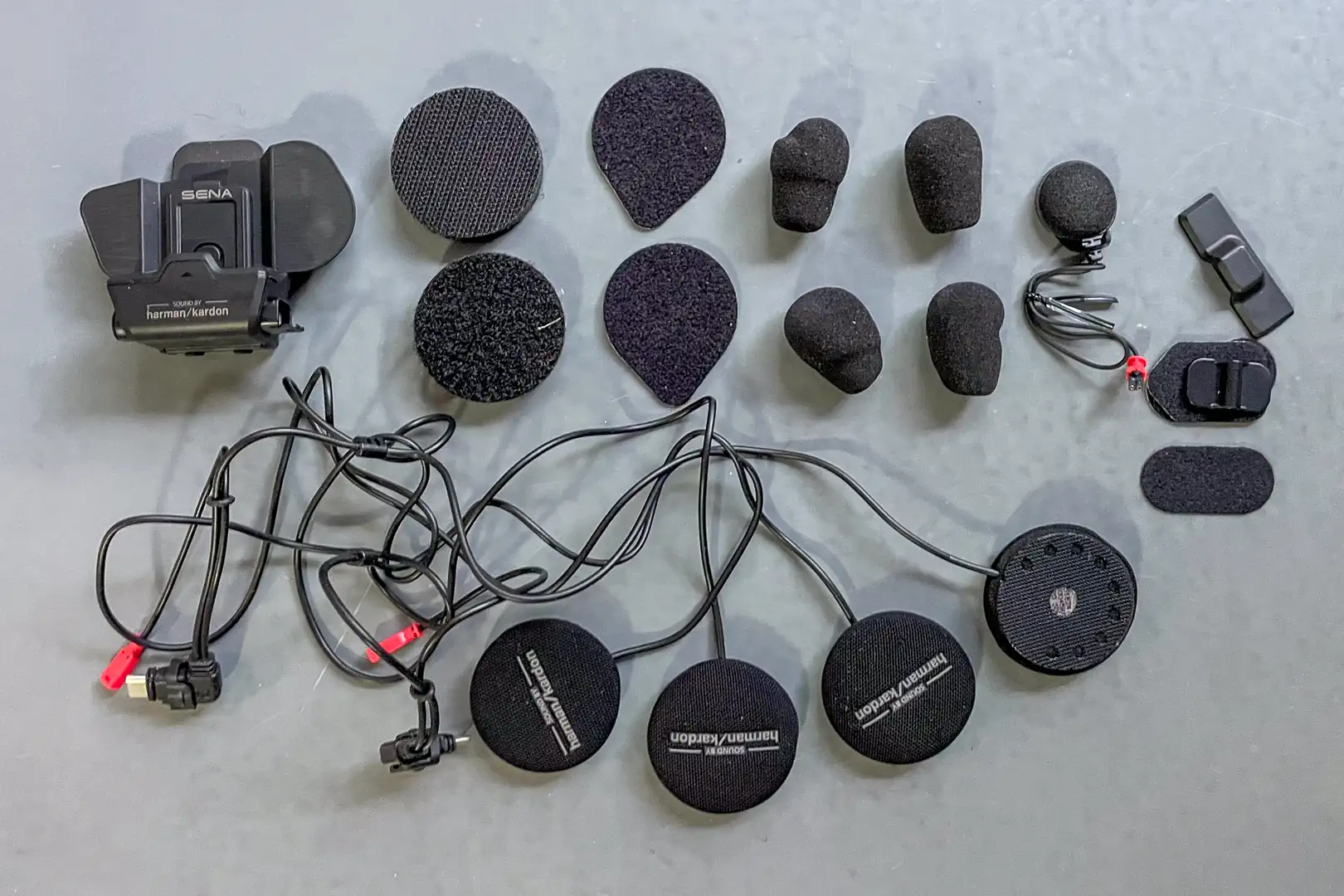
The Harman Kardon partnership focuses on natural sound reproduction and reduced listener fatigue during extended use. The system excels in scenarios requiring precise communication — technical instruction, complex navigation, or emergency coordination where every word matters.
Revolutionary Communication Technologies
This area reveals the most significant differences, as each manufacturer has developed distinct approaches to group communication challenges.
Cardo’s Dynamic Mesh Communication 2.0
Dynamic Mesh Communication (DMC) has always been a standout feature of Cardo’s intercom systems. It shines during group rides, automatically maintaining connections as riders spread out or fall back — no fumbling with buttons or interruptions, just seamless reconnection once riders come back in range.
What’s new with DMC? In 2025, Cardo introduced a major free update called Mesh Boost, rolling out across all second-generation DMC devices via over-the-air (OTA) updates. This upgrade fundamentally expands and enhances DMC connectivity
Mesh Boost: What’s Included
- Expanded Group Size: Supports up to 31 riders in DMC mode, more than doubling Cardo’s previous 15-rider limit
- Public Mesh: Opens communication to any riders within range—perfect for spontaneous or open-network connections
- Remote Grouping: Create your riding group in advance via Cardo Connect App and share an invite link. Riders can join remotely before even hitting the road
- VoIP-Based Cellular Intercom: Adds a layer of connectivity that works over mobile data so even when DMC (mesh) isn’t available, riders can stay connected via voice-over-IP (VoIP) mode
- Private Chat+ Enhancements: Now supports multi-rider private conversations (beyond two people), initiated via invites in the app
Sena’s Revolutionary Wave Technology
The Sena 60S introduces WAVE Intercom alongside enhanced Mesh Intercom 3.0, marking a major leap forward in motorcycle communication. Wave Intercom uses cellular networks to extend communication beyond traditional Bluetooth or mesh limits, offering riders truly unrestricted range when coverage is available.
With Wave, riders can stay connected regardless of distance or obstacles — whether crossing mountain passes, riding through dense forests, or navigating city traffic where traditional intercoms might drop out. The system seamlessly transitions between Mesh and Wave, ensuring your group stays in contact even if cellular service comes and goes.
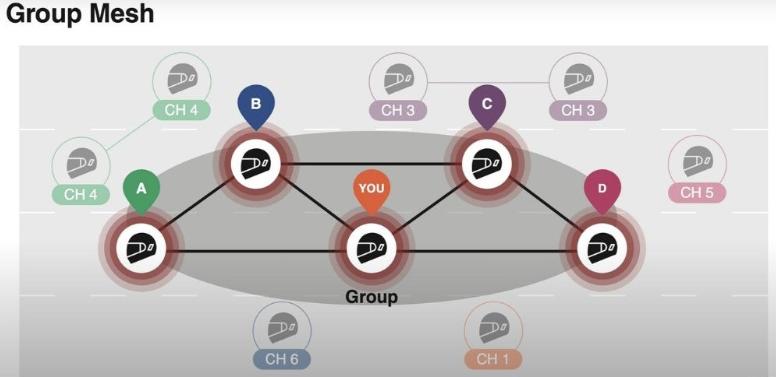
Key Specifications:
- Mesh 3.0: Up to 24 riders in Group Mesh; virtually unlimited in Open Mesh mode
- Wave Intercom: Unlimited range potential via cellular networks
- Mesh/Bluetooth Range: Up to 2 km in open terrain (without Wave)
- Hybrid Connectivity: Automatic switching between Mesh and Wave for continuous communication
Winner: Tie — Different Philosophies, Different Strengths
Cardo wins for riders who value mesh reliability, larger group sizes (31 riders), and OTA upgrades that keep devices future-proof. Its VoIP fallback is also a clever solution that doesn’t fully depend on mobile service.
Sena wins for riders who prioritize unlimited range via Wave Intercom and seamless hybrid connectivity that bridges mesh and cellular. In areas with strong coverage, this system is unmatched.
Ultimately, the “winner” depends on riding style: Cardo dominates off-grid and large group riding, while Sena excels for riders who want unlimited, always-connected communication when cellular coverage is available.
Voice Command Capabilities — A Critical Difference
This is where the systems reveal a significant operational difference.
Cardo’s Natural Voice Operation
The Packtalk Pro features Cardo’s refined “Hey Cardo” voice command system that functions reliably during challenging riding conditions. The system learns speech patterns over time, improving recognition accuracy with use. Crucially, it operates effectively even with significant helmet buffeting, engine noise, or wind interference.
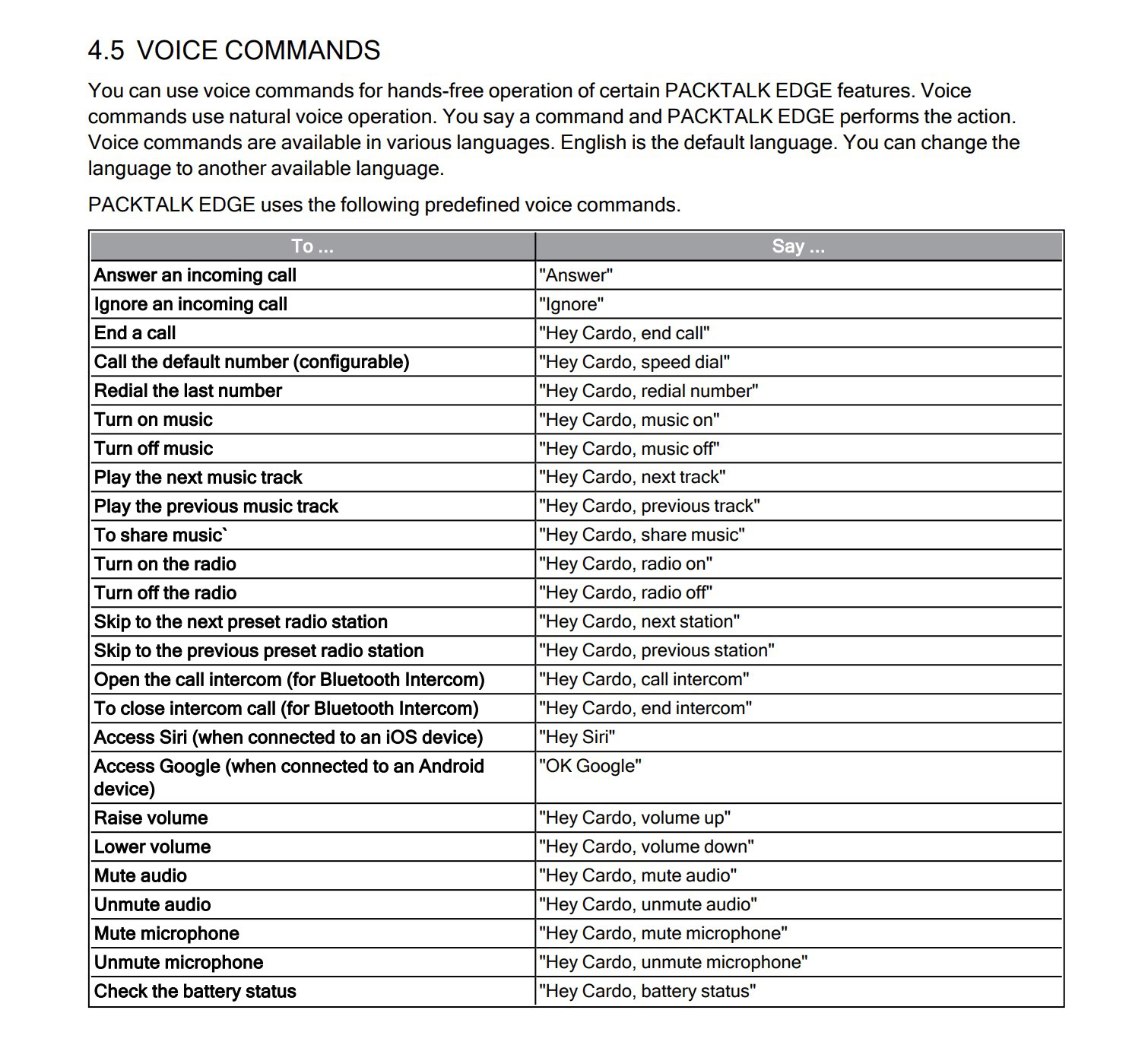
Voice commands include volume adjustment, music control, intercom management, and navigation integration. This hands-free operation proves invaluable during technical riding sections or heavy traffic where manual controls would compromise safety.
Sena 60S Voice Command System
The Sena 60S introduces an upgraded voice control system, now enhanced with AI support and available in multiple languages. Riders can activate commands hands-free using the “Hey Sena” wake word, with support for eight languages configurable through the Sena Motorcycles app.
Unlike Cardo, which relies heavily on natural-language processing, Sena’s approach allows riders to issue direct commands to the device (e.g., “Hey Sena, volume up,” or “Hey Sena, turn on Mesh”) as well as interact with their smartphone’s voice assistant for extended functions. This includes seamless integration with Google Assistant for navigation, calls, and other smartphone features.
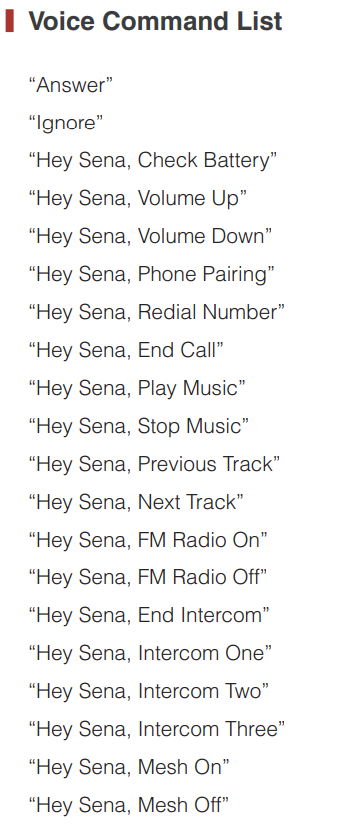
That said, while the feature is powerful, accuracy can vary. In practice, the 60S may require clearer pronunciation or quieter riding conditions compared to Cardo’s consistently responsive voice recognition.
Winner: Cardo Packtalk Pro
While Sena impresses with its multilingual support and smartphone integration, Cardo’s system remains the more reliable and rider-friendly option. Its ability to understand natural voice commands without exaggerated pronunciation and maintain accuracy in noisy environments gives it the edge—especially for riders who prioritize seamless, distraction-free communication while on the move.
Advanced Safety and Convenience Features
Cardo Packtalk Pro Innovation
The Pro features automatic crash detection that activated flawlessly, immediately notifying emergency contacts without delay in real crash scenarios. This isn’t theoretical — actual users report life-saving functionality.
The auto on/off feature eliminates dead batteries from forgotten power switches by detecting when you’re ready to ride and automatically managing power states.
Sena 60S Advanced Features
The 60S improves with AI-enabled features packed into a smaller, lighter, and customizable headset. The AI integration enhances voice recognition and connection management, adapting to usage patterns over time.
The system includes comprehensive customization options with multiple faceplates and mounting configurations allowing personalization for different helmets and aesthetic preferences.
User Interface Philosophy
The systems embody fundamentally different interaction philosophies:
Cardo Approach: Prioritizes voice control and automated functions to minimize physical interaction while riding. The magnetic mount and auto features reflect this hands-off philosophy.
Sena Approach: Emphasizes tactile control through the proven jog dial system while adding “Hey Sena” and AI-enhanced voice capabilities as a supplement. Physical controls remain the primary interface with voice as backup.
Read our in-depth Sena 60S review covering its waterproof rating and helmet mount.

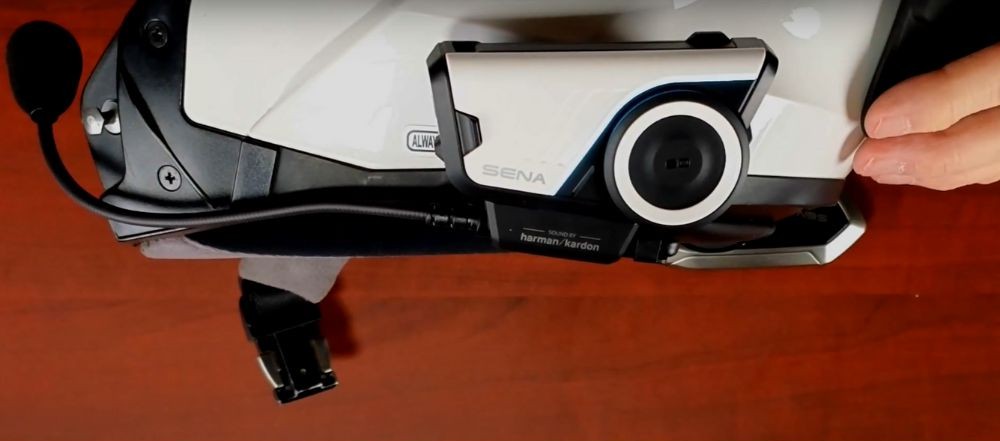
Cross-Platform Compatibility
Both systems support Universal Intercom for cross-brand communication, but with important limitations:
- Loss of advanced mesh networking features
- Reduced to basic Bluetooth functionality
- No access to brand-specific advanced features
- Simplified group management capabilities
Groups achieve optimal performance when standardizing on a single platform rather than mixing systems
Comprehensive Specifications Comparison
| Feature | Cardo Packtalk Pro | Sena 60S |
| Audio System | JBL 45mm speakers, 3 EQ profiles | Harman Kardon 2nd-gen, 40mm |
| Group Capacity | 31 riders (mesh boost) | 8 riders (Mesh 3.0), unlimited (Wave) |
| Range | 1.6km rider-to-rider | Up to 2km open terrain, unlimited with Wave |
| Voice Commands | “Hey Cardo” – robust recognition | “Hey Sena”, 8 languages, smartphone integration |
| Mount System | Magnetic Air Mount | Magnetic mount with clamp base |
| Battery Life | 13+ hours | 13+ hours |
| Safety Features | Crash detection, auto on/off | Wave emergency communication |
| Connectivity | Dynamic Mesh 2.0 | Mesh 3.0 + Wave cellular |
| Waterproof | IP67 | IP67 |
| Warranty | 3 years | Standard warranty |
| Price | $459 | ~$360-$439 |
Love a helmet that only fits a specific comms unit?
HJC, Shoei, Schuberth, Nexx and even Harley all try to force you in to custom-fit comms units that may not fit how you ride. So Tubs Jackson created an adapter to get a factory fit for any comms unit on these otherwise amazing helmets.
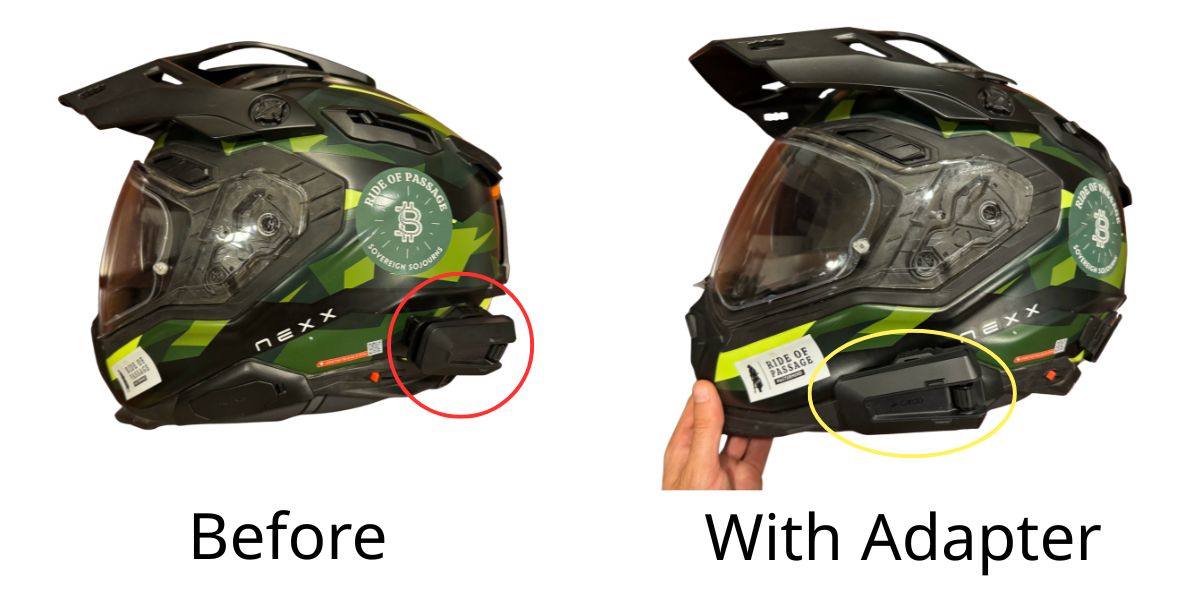
Tubs Jackson is a weird name, I know, but I have their adapter in my Nexx X.WED3 helmet and it’s rock solid. Much nicer than reaching way back to where I had the sticky mount before. I wish I’d thought of this idea.
Tip: Get FREE SHIPPING just by buying here or using code BETTERONTHEROAD at checkout.
Final Verdict
After riding with both systems, here’s how I see it:
If your group values ease of use, automatic convenience, and safety features, the Cardo Packtalk Pro is the smarter pick. The crash detection, magnetic mount, and natural voice commands mean less fiddling with buttons and more focus on the ride. It’s the system I’d recommend for groups that want everything to “just work” without constant setup.
But if your crew is the type that rides long distances, splits up often, or rides across areas where mesh alone isn’t enough, the Sena 60S has a clear edge. Its Wave intercom with unlimited range via cellular and deep customization options makes it ideal for riders who want maximum flexibility and don’t mind tweaking settings to get it just right.
$499.95 | $370.00 |
|
|
|
|
- 15+ rider intercom over Mesh (even Senas)
- Magnetic air mount
- Auto on-off
- Crash detection and emergency call
- 45mm JBL speakers in the box (the best)
- Costs as much as a mid-range helmet
- Mesh and Wave intercom (unlimited range with cellular signal)
- Harman Kardon 40mm speakers
- Long battery life (17–22 hours)
- Mesh only connects with other Sena units
- Not fully waterproof
For tight-knit local groups that stay together on rides, Cardo feels like the better everyday companion. For adventure riders, touring groups, or mixed-distance riders, Sena shines because it’s built for staying connected no matter where everyone ends up.
In the end, it’s less about which one is “better” and more about how your group actually rides. Pick the system that matches your crew’s riding style — that’s when the investment really pays off.
Related
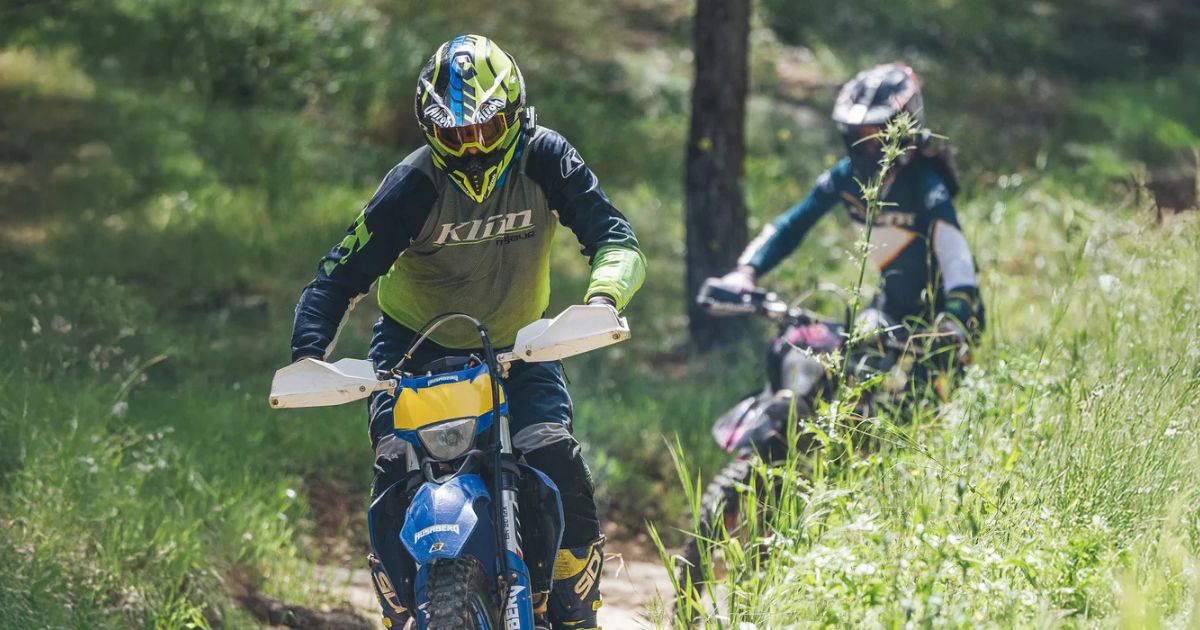
Best Cardo Communicators for Motorcycle Riders
Find the best Cardo communicator for your rides—compare mesh, Bluetooth, sound, and features to match your budget, group size, and style.




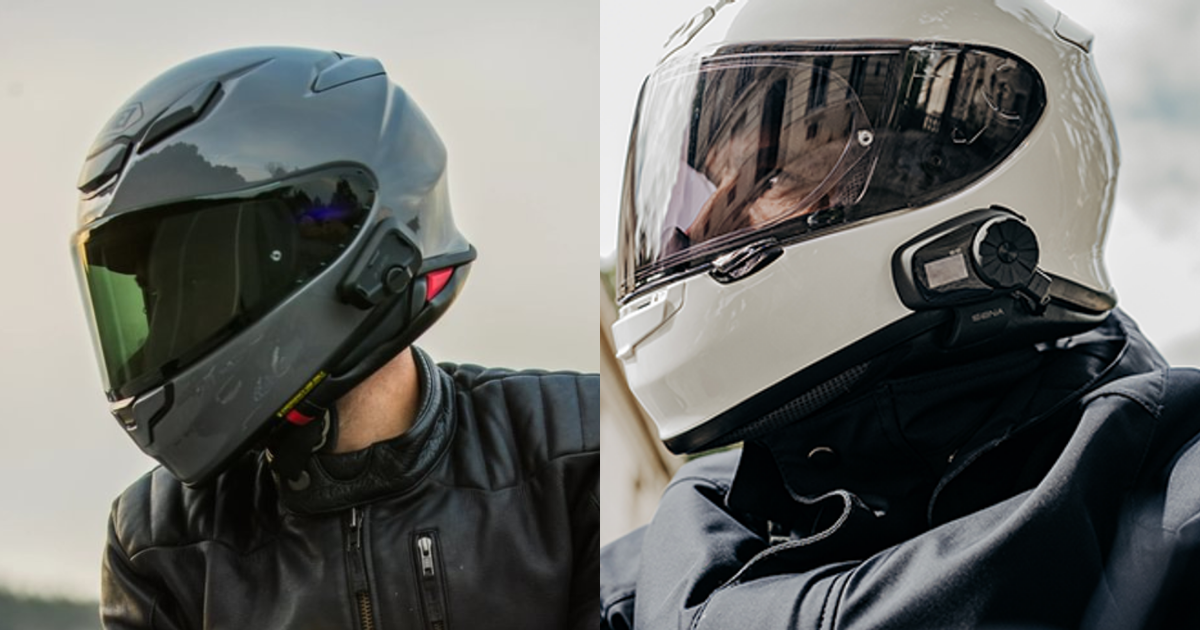
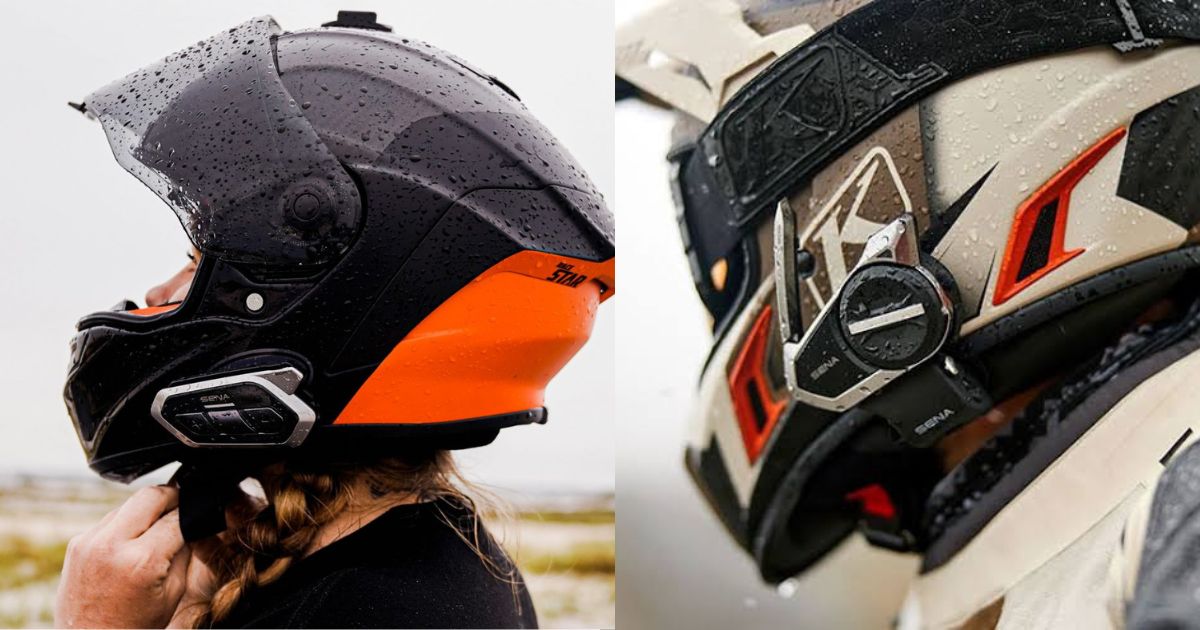
Rick
3 months ago
Very thorough review but I can’t find any wattage or power specs for either unit. Both have great speakers, but wearing earplugs I have to keep my volume at Max to enjoy music. I would like more available watts per channel.
My previous headsets were the Cardo Freecom 4X and Sena SMH-10.
Both required max volume to enjoy music in my Shoei RF1200.